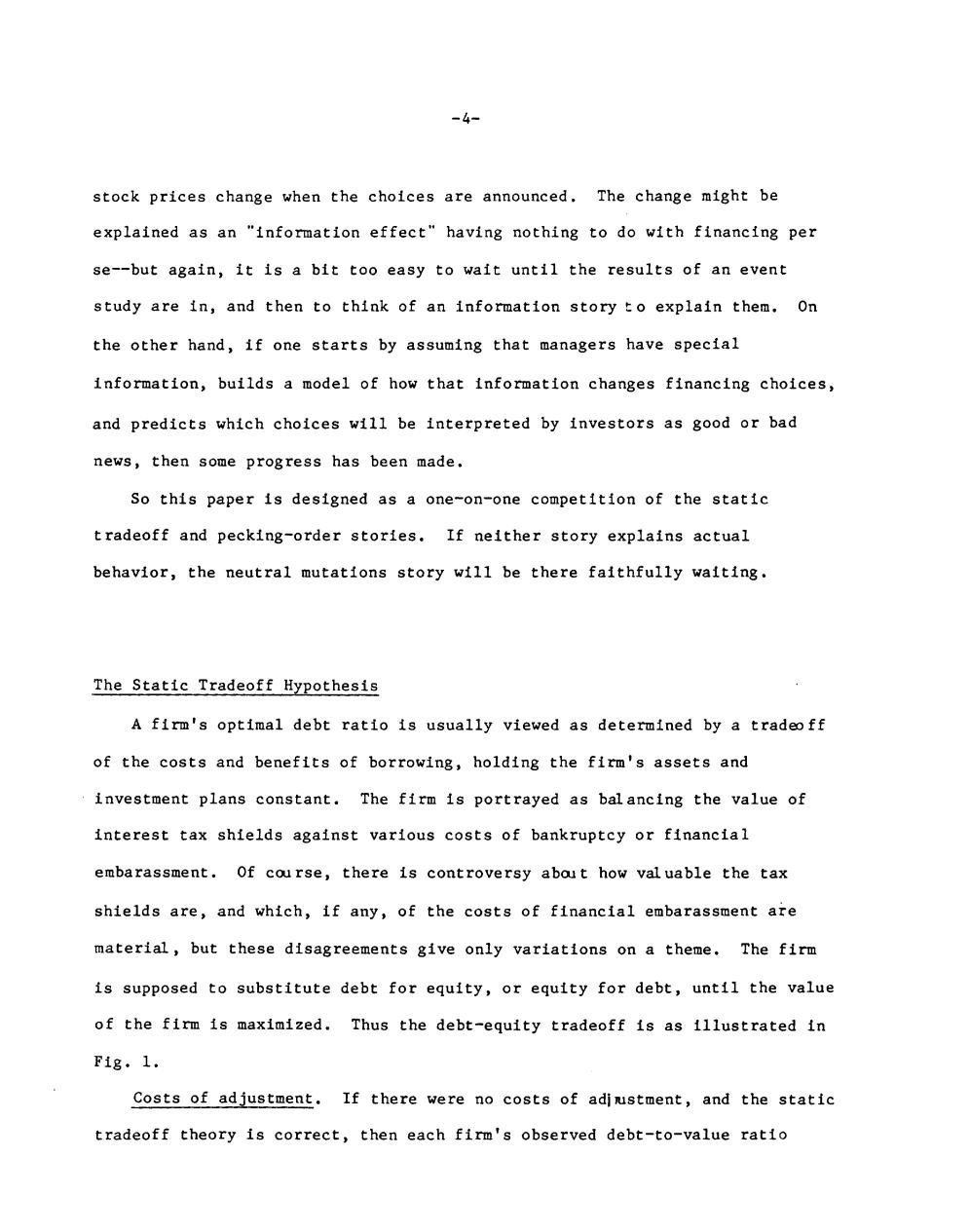正在加载图片...

-4- stock prices change when the choices are announced.The change might be explained as an "information effect"having nothing to do with financing per se--but again,it is a bit too easy to wait until the results of an event study are in,and then to think of an information story to explain them.On the other hand,if one starts by assuming that managers have special information,builds a model of how that information changes financing choices, and predicts which choices will be interpreted by investors as good or bad news,then some progress has been made. So this paper is designed as a one-on-one competition of the static tradeoff and pecking-order stories.If neither story explains actual behavior,the neutral mutations story will be there faithfully waiting. The Static Tradeoff Hypothesis A firm's optimal debt ratio is usually viewed as determined by a tradeo ff of the costs and benefits of borrowing,holding the firm's assets and investment plans constant.The firm is portrayed as bal ancing the value of interest tax shields against various costs of bankruptcy or financial embarassment.Of course,there is controversy about how val uable the tax shields are,and which,if any,of the costs of financial embarassment are material,but these disagreements give only variations on a theme.The firm is supposed to substitute debt for equity,or equity for debt,until the value of the firm is maximized.Thus the debt-equity tradeoff is as illustrated in F1g,1. Costs of adjustment.If there were no costs of adjustment,and the static tradeoff theory is correct,then each firm's observed debt-to-value ratio